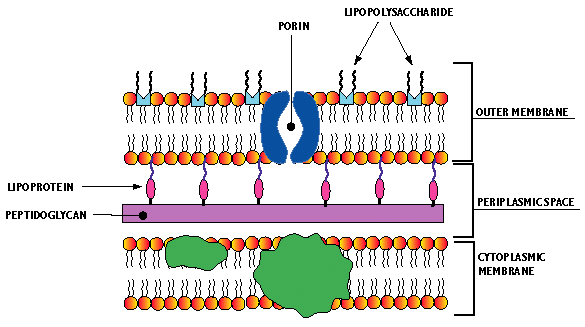Made of a phospholipid bilayer with integral and peripheral proteins embedded. It maintains the selective permeability of the cell, has respiratory enzymes and during cell division the chromosome is linked to the cell membrane at a site called Mesosome.
Cell Wall
Protects and maintains the shape of the organism.There are 2 basic cell walls, Gram positive and Gram negative.

